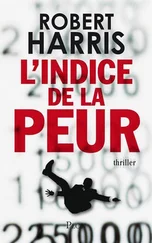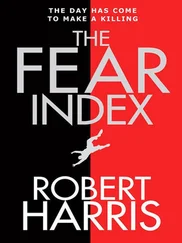But above all, it is the crudity of the forgery which belies the idea that it might be the product of a Nazi conspiracy. If this was a serious attempt to present an untarnished Hitler, one would at least have expected the conspirators to have taken some elementary precautions. They would not have used paper containing chemical whitener; they would have avoided such Kujau touches as plastic initials and red cord made of polyester and viscose; they would not have relied so completely on the work of Max Domarus as to have copied out his errors.
What is sobering is to speculate on what might have happened if these precautions had been taken. After all, Stern and News International stopped publication only because of the conclusiveness of the forensic tests carried out in the first week of May. If those tests had found nothing substantially wrong, the diaries would have been printed and would now stand as an historical source. No doubt they would have been dismissed by most serious scholars, but nevertheless they would have been bought and read by millions. Thomas Walde and Leo Pesch would have produced their book on Rudolf Hess and become rich men; Gerd Heidemann would have retired with his Nazi memorabilia to southern Spain; and Konrad Kujau, ex-forger of luncheon vouchers, having thrown students of the Third Reich into turmoil, would no doubt have continued flooding the market with faked Hitler memorabilia.
Instead of which, on Tuesday 21 August 1984, after more than a year in custody, Heidemann and Kujau were led out of their cells and into a courtroom incandescent with television lights and photographers’ flash bulbs to stand trial for fraud. Heidemann was accused of having stolen at least 1.7 million of the 9.3 million marks handed over by Stern to pay for the diaries. Kujau was charged with having received at least 1.5 million marks. Edith Lieblang, although not being held in prison, was also required to attend court with her lawyer, accused of helping to spend Kujau’s illegal earnings.
The two men had both been transformed by the events of the past sixteen months. Heidemann looked worn out and seedy. He had grown a beard in captivity which only gave further emphasis to the unhealthy prison pallor of his skin. His first act on arriving in the courtroom was to head for the corner. When anyone spoke to him, he would look away. It was common knowledge that he had suffered some kind of nervous collapse in jail.
Kujau, in contrast, had developed into something of a star. He had sold his life story to Bild Zeitung for 100,000 marks. He gave regular television interviews from his prison cell. He slapped backs, exchanged jokes with his warders, kissed female reporters, and happily signed autographs ‘Adolf Hitler’. And he lied: expertly, exuberantly and constantly. Every reporter who interviewed him came away with a forged diary entry as a souvenir and a different version of his career. He drove Heidemann mad with frustration. While the reporter sat alone in his cell, poring over a meticulous card-index of the events of the past three years, trying to work out what had happened, he could hear Kujau regaling a reporter with some new account of his adventures; occasionally, like a tormented beast, Heidemann would let out a howl of rage. He would not speak to Kujau; he would not look at him. It was a far cry from the days when Gerd and Gina and Conny and Edith would meet and toast with champagne their good fortune at having met one another.
On its opening day, the Hitler diaries trial drew an audience of 100 reporters, 150 photographers and television crewmen and around sixty members of the public. It was front page news for the first couple of days; thereafter interest dwindled until eventually the audience numbered only a half dozen regular court reporters and a handful of curious day trippers. The proceedings became so monotonous that in the middle of September one of the magistrates had to be replaced because of a chronic inability to stay awake.
Heidemann denied stealing any of Stern ’s money. However, from his private papers and known bank accounts, the prosecution had no difficulty in establishing that he had spent almost 2 million marks more than he had earned since 1981, even allowing for the 1.5 million marks paid to him as ‘compensation’ for obtaining the diaries. The prosecutor also told the court that, although he would only be attempting to prove the smaller figure, he believed Heidemann could have stolen as much as 4.6 million marks. Heidemann’s defence was that the money had been paid to him by four anonymous investors as payment for a stake in one of the reporter’s Nazi treasure hunts. As Heidemann refused to name these gentlemen, his story lacked credibility. His defence lawyers managed to persuade the court to accept as evidence a series of tape recordings made by Heidemann of his telephone conversations with Kujau. These had been edited together by the reporter and effectively proved his contention that he had not known the diaries were forged. Unfortunately, whenever the discussions turned to the matter of payments, the tapes abruptly ended, strengthening the prosecution’s case that Heidemann had not handed over all of the money.
Kujau’s defence was handled by a lawyer of feline skill and left-wing opinions named Kurt Groenewold. At first sight Croenewold was an unlikely choice to defend a Nazi-obsessed forger: he was one of West Germany’s leadihg radical lawyers, a friend of the Baader–Meinhof group, a solicitor who numbered among his clients the CIA ‘whistleblower’ Philip Agee. But it turned out to be an inspired partnership. Groenewold’s defence of Kujau was based on the argument that he was a small-time con man who had been lured into forging the Hitler diaries only by the enormous sums offered by the capitalists from Bertelsmann. Whilst Groenewold dragged Stern into the centre of the proceedings, exposing the negligence which had allowed the fraud to reach the proportions it did, Kujau was abie to play the role of a likeable rogue whose cheerfully amateurish work had been exploited by the salesmen from Hamburg.
On Monday 8 July 1985 the media returned in force to Hamburg to record the verdict. After presiding over ninety-four sessions of testimony from thirty-seven different witnesses, the judge found all the defendants guilty. Heidemann was sentenced to four years and eight months in prison. Kujau received four years and six months. Edith Lieblang was given a suspended sentence of one year. The judge said he could detect no evidence of a wider conspiracy. Stern, he announced, had acted with such recklessness that it was virtually an accomplice in the hoax.
More than two years had passed since the diaries were declared forgeries. More than 5 million marks of Stern ’s money remained – and, at the time of writing, remains – unaccounted for.
The Hitler diaries affair had a traumatic effect upon Stern . Its offices were occupied by journalists protesting at the management’s appointment of two new conservative editors. There were hundreds of abusive letters and phone calls. The overwhelmingly left-wing staff found themselves being greeted on the telephone by shouts of ‘Heil Hitler!’ Politicians treated them as a laughing stock; prominent West Germans pulled out of interviews; young East German pacifists refused to cooperate with a planned Stern feature article on the grounds that the magazine was ‘a Hitler sheet’. Circulation slumped. Before the scandal, the magazine reckoned to sell around 1.7 million copies. This figure climbed to a record 2.1 million in the week in which the diaries’ discovery was announced. After the revelation that they were forgeries, circulation fell back to less than 1.5 million. Apart from the loss of advertising and sales revenue, the cost to the magazine was estimated by the Stern Report as 19 million marks: 9.34 million for the diaries; 1.5 million for Heidemann; 7 million (before tax) as compensation to the two sacked editors; and miscellaneous costs, including agents’ fees, publicity and the expense of destroying thousands of copies containing the second instalment of the Hess serialization.
Читать дальше












